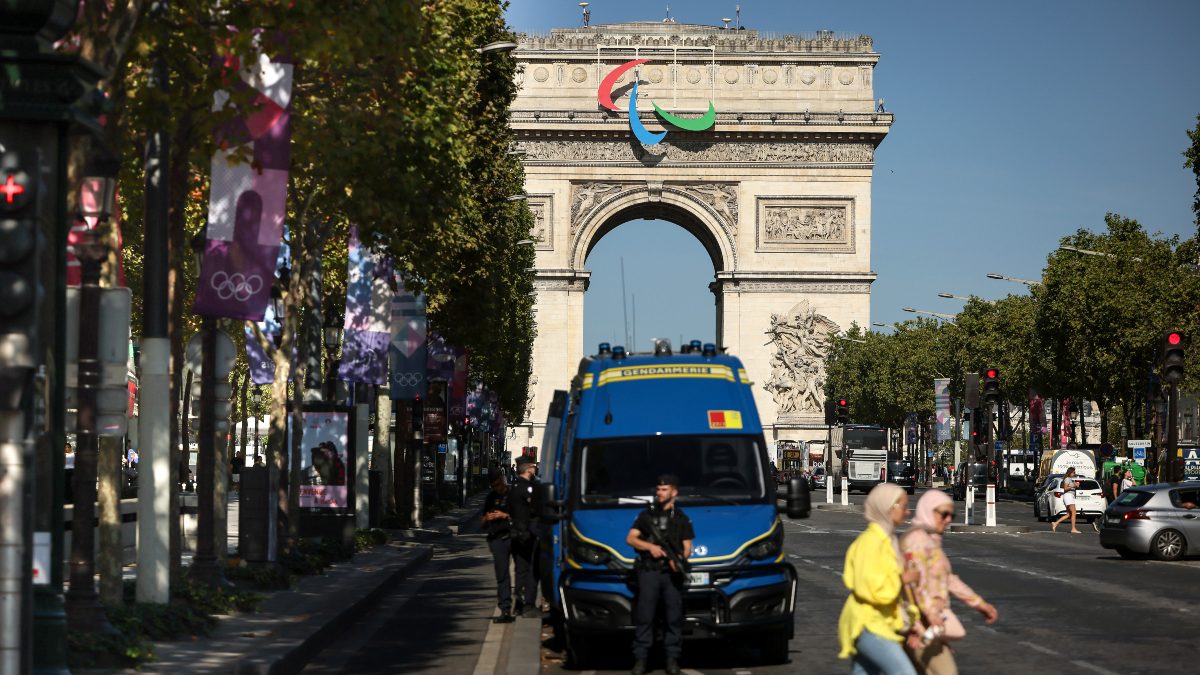Nearly 4,400 para-athletes will be part of the Paris Paralympics opening ceremony on August 28 read more
)
The torch for the upcoming Paris 2024 Paralympic Games is presented ahead of the opening ceremony on August 28. AP
After an Olympic opening ceremony on river Seine, the Paralympic Games will also open outside the stadiums on Wednesday, August 28.
The organisers have chosen a moving setting, stretching from the Arc de Triomphe to the Place de la Concorde. Artistic director Thomas Jolly has once again stepped away from tradition of inaugural ceremonies. For nearly three hours, the City of Light will be transformed into a stage.
Fifty thousand spectators are expected to attend the ceremony, which will begin at 7:40pm local time.
Paris has chosen the iconic Champs-Elysees avenue and the historic Place de la Concorde to host the opening ceremony.
The prestigious avenue sweeping through the 8th arrondissement to the west of central Paris is dotted with cafes, palaces and luxury shops and connects the Arc de Triomphe in the west with Place de la Concorde in the east in a single straight line.
The Champs-Elysees
Tens of thousands of people daily throng the two-kilometre-long tree-lined artery with its wide sidewalks.
It has long been for French a place of celebrations and popular gatherings.
It was there in 1960 that American actress Jean Seberg appeared in Jean-Luc Godard’s legendary new wave film “Breathless” selling copies of the New York Herald Tribune.
On Wednesday it will be the scene of a popular parade, open to everyone and involving up to more than 180 delegations and 4,400 para-Olympians.
France has celebrated two football World Cup victories there, the traditional military parade on July 14, the Bastille Day national holiday, and the Tour de France cycle race ends there.
Hundreds of thousands of Parisians and tourists gather there to celebrate New Year’s Eve.
Once fields and fallow land, the avenue started to take shape when Louis XIV’s city planner first linked the Louvre to the Tuileries Garden in the mid-17th century.
At one end of the avenue is the Arc de Triomphe, commissioned by French Emperor Napoleon which now honours France’s war dead, and was inaugurated in 1836.
France’s WWII leader General Charles de Gaulle, chose it, of course, for his triumphant return from exile on August 26, 1944, after the Liberation of Paris from the Nazis.
However the prestigious thoroughfare has known scenes of unrest. Police used tear gas, rubber bullets and water cannon when “yellow vest” anti-government protesters in 2018 attacked the Arc de Triomphe, and ransacked shops.
However, with stores and historic cinemas closing along the avenue due to rising rents and falling sales, locals have gradually abandoned the Champs-Elysees over concerns that it is too noisy, dirty and expensive.
With Paris’ other famous symbol the Eiffel Tower looming just across the River Seine, the name is the French for Elysian Fields, the paradise for dead heroes in Greek mythology.
Place de la Concorde
At the other end, the Place de la Concorde, the largest square in Paris, will be the scene of the official parade for ticket holders, in addition to the protocol and artistic sequences.
The square has a bloody past: then known as “Place de la Revolution” it was a place of execution and heads rolled (literally) there during the French Revolution.
King Louis XVI and his wife Marie-Antoinette were famously guillotined there in 1793 during the Reign of Terror that followed the 1789 Revolution.
It was renamed Concorde after the July Revolution of 1830.
Today the elegant paved square by the Seine is defined by its huge obelisk, one of a pair originally erected by Ramses II outside the temple in Luxor in Egypt in the 13th century BC. It was gifted to Paris in 1830.
What can we expect from the ceremony?
This opening ceremony project is led by Thomas Jolly, Artistic Director for the Ceremonies:
“While the Paris 2024 Paralympic Games Opening Ceremony will be the first of its kind, its monumental and popular concept is, for me, first and foremost a magnificent source of inspiration. From the Champs-Elysées to Place de la Concorde, I look forward to creating this spectacle that will transform the heart of Paris, with performances that have never been seen before. A spectacle that will showcase the Paralympic athletes and the values that they embody. A spectacle that will unite spectators and television audiences worldwide around the unique spirit of the Paralympic Games.”
The ceremony is choreographed and staged under the guidance of Swedish choreographer Alexander Ekman. Known for his stage designs for operas and plays, he is particularly recognised for his version of Pyotr Ilyich Tchaikovsky’s ballet Swan Lake in 2014.
For this ballet, performed at the Oslo Opera in 2016, Ekman recreated a lake, filled with 6,000 liters of water. He sees the Paris Paralympics opening ceremony as a festive and political event.
To make inclusivity central to the artistic moment, he has called on dancers with disabilities. “They are extraordinary. They are more capable than many able-bodied people, both mentally and physically,” he told Agence France-Presse.
How can I watch the opening ceremony of the 2024 Paris Paralympics?
Fans can tune into the Sports18 TV channels (Both SD and HD) to watch the opening ceremony of the Paris Paralympics on television. The live streaming for the same will be available on JioCinema mobile app and website. The opening ceremony of the Paris Paralympics will commence at 11.30 pm IST on 28 August (Wednesday), which is 8 pm Paris time.
(with inputs from AFP)

 3 weeks ago
5
3 weeks ago
5
)
)
)
)
)
)
)
)
)
)
)
)
)
)
)
)
)
)
)
)
)
)
)
)
)
 English (US) ·
English (US) ·